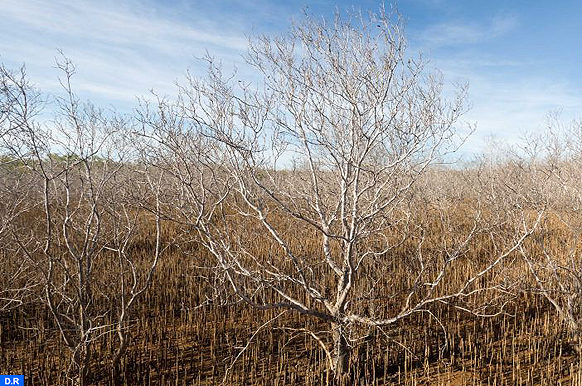Huge Swathe of Australian Mangroves ‘Die of Thirst’
Sydney, 14/03/2017 (MAP) – Thousands of hectares of mangroves in Australia’s remote north “died of thirst” last year, in the largest climate-related incident of its kind ever recorded, scientists said on Tuesday.
Some 7,400 hectares, stretching 1,000 kilometres across the semi-arid Gulf of Carpentaria, perished, according to researchers from Australia’s James Cook University.
Mangroves play an important ecological role, not only protecting seagrass and corals by filtering water runoff from the land, but acting as breeding grounds for fish stock and absorbing large amounts of carbon from the atmosphere.
Mangrove ecologist Norm Duke, from James Cook University, said three factors came together to produce the unprecedented event.
“From 2011 the coastline had experienced below-average rainfalls, and the 2015/16 drought was particularly severe,” he said as the findings were published in the Journal of Marine and Freshwater Research.
“Secondly the temperatures in the area were at record levels and thirdly some mangroves were left high and dry as the sea level dropped about 20 centimetres during a particularly strong El Nino,” which is a climate phenomenon that occurs every four to five years, affecting rainfall patterns and causing both drought and flooding.
Australia is home to some seven percent of the world’s mangroves.













